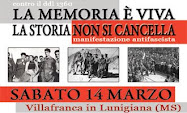1950s photographs speak of the other side of Athens

Athens during the 1950s as captured by the late photographer Stelios Kasimatis. On view at the Goethe Institute in Thessaloniki.
By Alexandra Koroxenidis - Kathimerini English Edition
Ahens during the 1950s was a city undergoing change. The war had just ended and there was diffuse hope of a better future. But there was also much poverty and the uneasy hangover of political repression.
“The Other Athens of the ’50s,” a photography exhibition on view at the Goethe Institute in Thessaloniki, documents this side. It shows a moment in Greek history, but also tells the interesting story of Stelios Kasimatis, the man who took the photographs. In some ways it is a story one often hears about many politically left-minded people of the time; people who fought with the EAM-ELAS regime and were subsequently sent into exile.
Kasimatis was one of them. Where his story differs is in the unusual details of his life. And those fit the present exhibition in terms of how Kasimatis, initially an airplane mechanic, developed an adamant interest in photography and managed to practice his trade under dire circumstances. The exhibition, which is curated by the late photographer’s son, Manolis Kasimatis — also a photographer — is as much a documentation of a period in Greek history as a testament to the unusual life of a man, his political commitment and his notion of his art as a compulsive, political responsibility.
Born in 1920 in Piraeus, Kasimatis was an employee at the Greek State’s airplane-manufacturing factory. But during the resistance he quit his job for ideological reasons, fearing that had he stayed on he would have implicitly sided with the enemy. He fought with the left fraction and became commander of the Voula-Glyfada regime.
He was then exiled to Icaria, where together with four other of his fellow political exiles he put together a photographic team. They secretly set up a darkroom, used an actual camera as a magnifier and received chemicals sent from Athens in secret. “My father took many pictures of the people in exile. He tried to send them through another photographer to Athens, but they were never delivered to their destination. This was a time of political persecutions and people were very afraid of giving out information,” says Manolis Kasimatis. “My father told me very little of his political involvement, probably because he did not want to get me into any trouble. Had much of his work been saved it would have provided an invaluable political documentation.”
Kasimatis was a man who suffered for his political beliefs. After Icaria he was exiled to Makronisos, and was unfortunately sent to Daphni after that.
His commitment to photography cannot be seen separately from his steadfast political ideology. It explains why he was so drawn to documentary photography and to images that captured poverty, social inequality and human suffering. It also explains why he worked for the leftist newspaper Avgi as a photojournalist for almost eight years. “As a photojournalist his objective became to tell the truth,” Kasimatis says of his father. Many of the photos he took were never published and were only used for the newspapers’ archives. Among them are the trials of political exiles.
Kasimatis also did other, apolitical work. Some of his better-known commercial photos were those of Melina Mercouri during the shooting of the film “Stella,” and were used for the press. A portrait of Josephine Baker during her visit to Athens is another well-known work of his.
While at Avgi, Kasimatis also kept a photographic studio of his own, which he also used as a projection and printing studio. Kasimatis did some independent projects too, with no intention of publishing them. His photographic itineraries in Athens and Piraeus, to which the photos at the Goethe Institute belong, were one of them.
The photographs were never published but fortunately were not lost, like the photos from Icaria and Makronisos. They are symbolic of a period in the history of Greece, but for Kasimatis’s son they are also symbolic of the work of so many forgotten photographers whose work remains unknown. “Greek photography of the time is not just about Meletzis and Tloupas and Papaioannou. It is important that we learn more about the work of other artists as well,” says Kasimatis. This explains why Kasimatis has curated the exhibition as a tribute to what he calls “all those forgotten photographers.” Had their work survived or at least been published, it is likely that they would have added another view into our past but also into the pasts of other peoples’ lives.
see others photo by Stelios Kasimatis in
http://www.manolokasimatis.gr/index.php?fID=26
δειτε και αλλες φωτογραφιες του Στελιου Κασιματη






